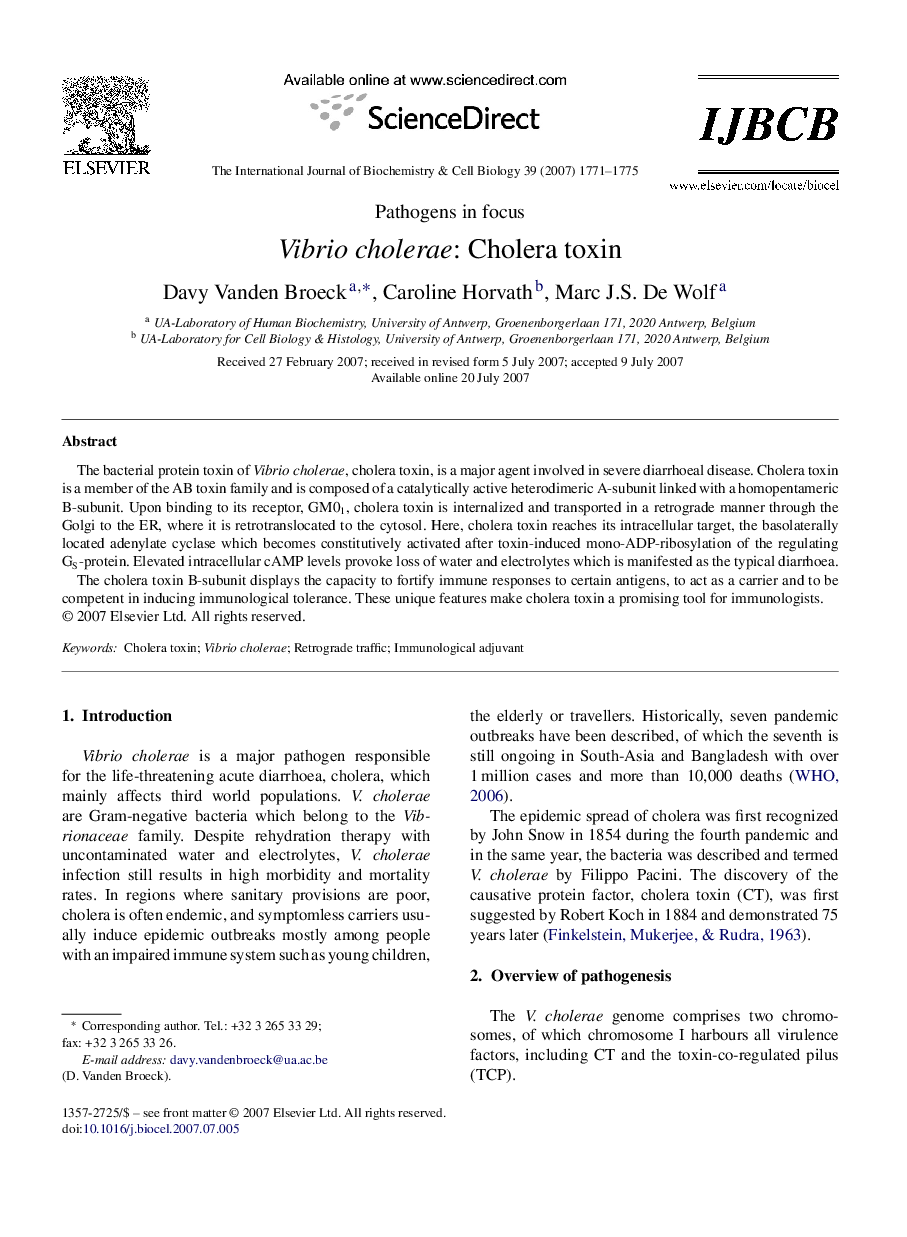| Article ID | Journal | Published Year | Pages | File Type |
|---|---|---|---|---|
| 1985398 | The International Journal of Biochemistry & Cell Biology | 2007 | 5 Pages |
The bacterial protein toxin of Vibrio cholerae, cholera toxin, is a major agent involved in severe diarrhoeal disease. Cholera toxin is a member of the AB toxin family and is composed of a catalytically active heterodimeric A-subunit linked with a homopentameric B-subunit. Upon binding to its receptor, GM01, cholera toxin is internalized and transported in a retrograde manner through the Golgi to the ER, where it is retrotranslocated to the cytosol. Here, cholera toxin reaches its intracellular target, the basolaterally located adenylate cyclase which becomes constitutively activated after toxin-induced mono-ADP-ribosylation of the regulating GS-protein. Elevated intracellular cAMP levels provoke loss of water and electrolytes which is manifested as the typical diarrhoea.The cholera toxin B-subunit displays the capacity to fortify immune responses to certain antigens, to act as a carrier and to be competent in inducing immunological tolerance. These unique features make cholera toxin a promising tool for immunologists.
